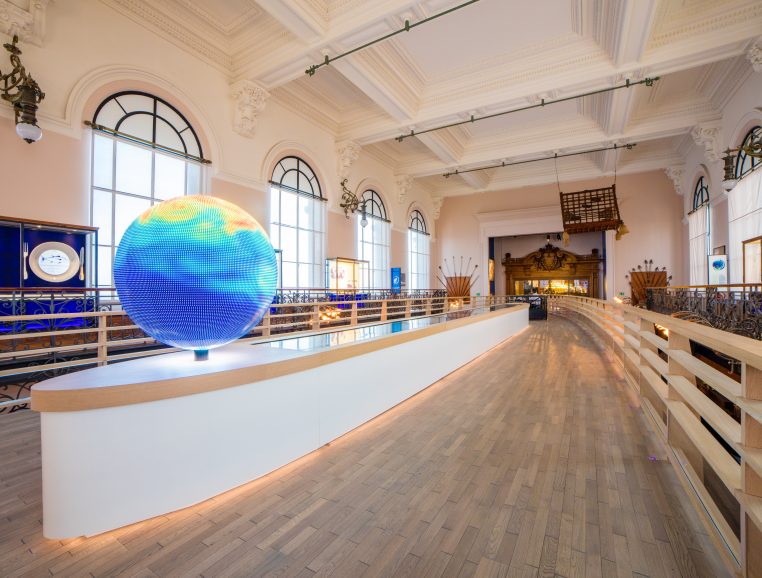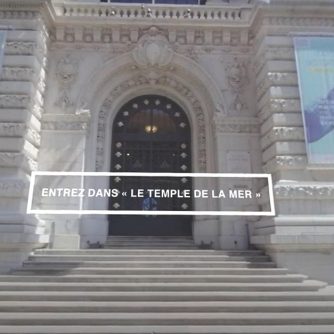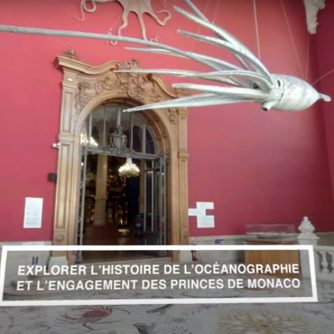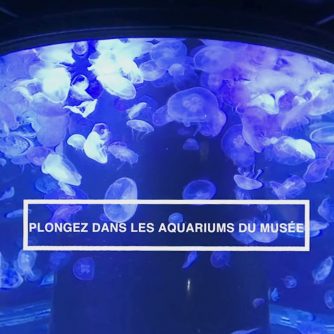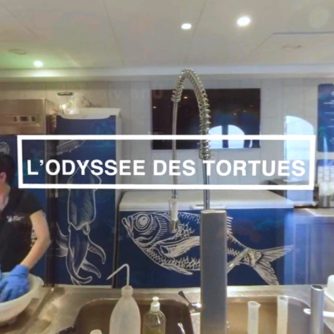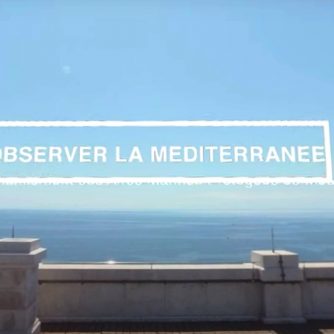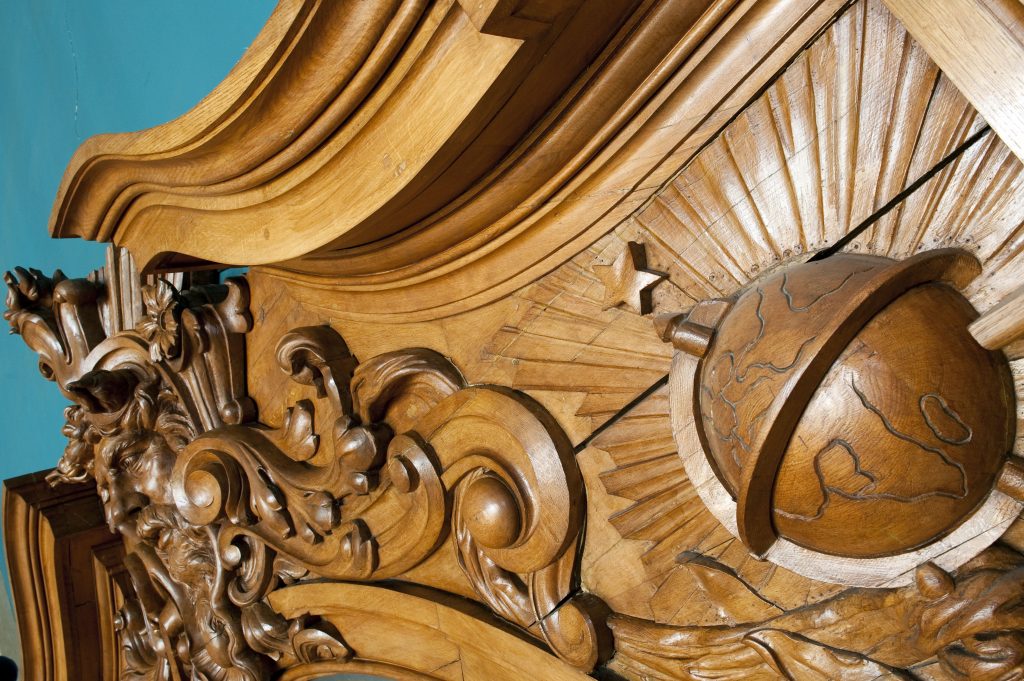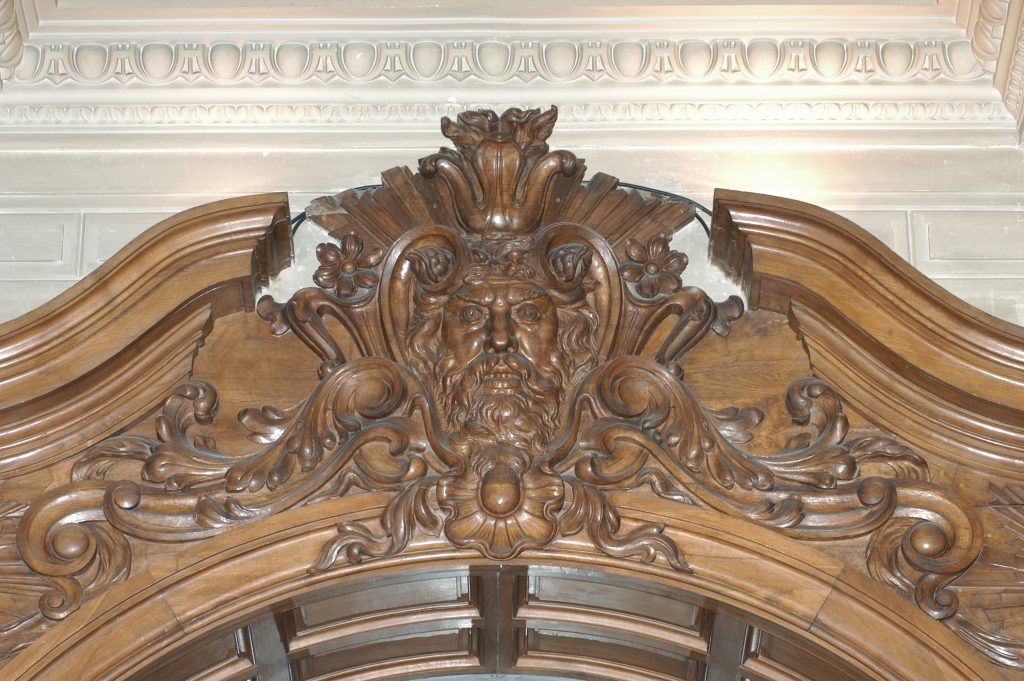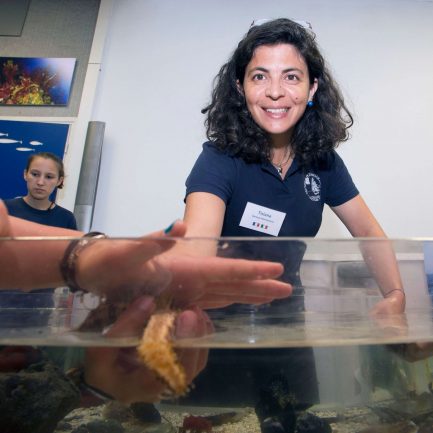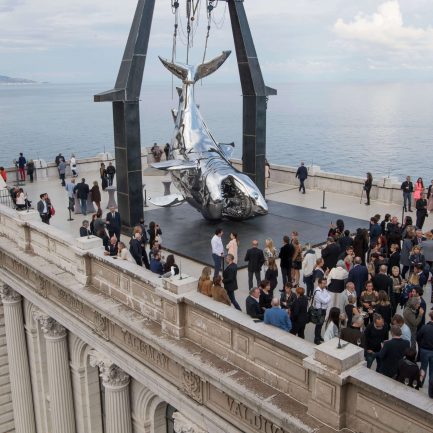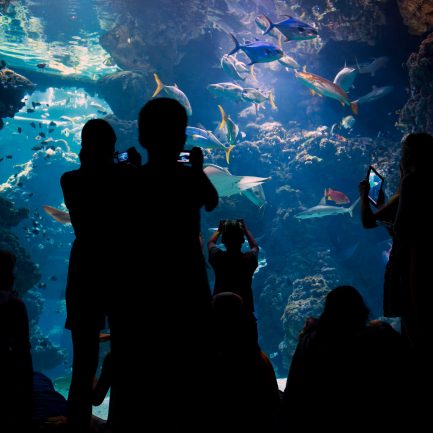EXPLORE THE HISTORY OF OCEANOGRAPHY
AND THE COMMITMENT OF THE PRINCES OF MONACO
- Home
- Actualités
- Chapter 2 – The History of Oceanography
Discoveries that reveal
the Ocean today.
The steps of your virtual visit
Points of interest :
Monaco & the Ocean :
- Prince Albert I
- The laboratory
- Rainier III
- Jacques-Yves Coustea
- Prince Albert II
- The globe
The giant squid
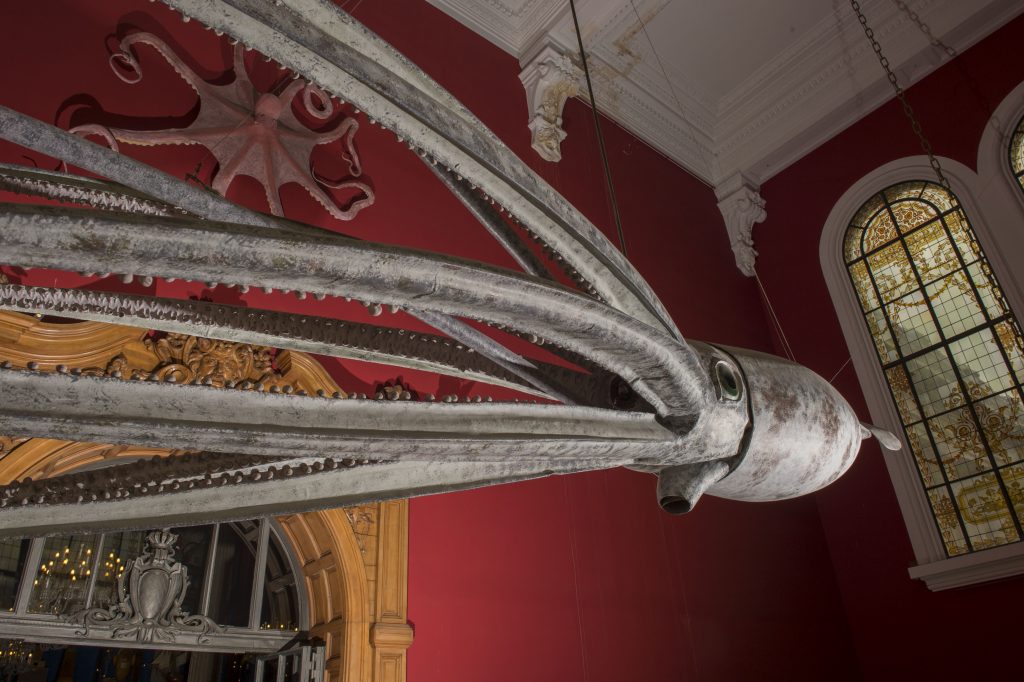
This life-size reproduction of a real giant squid (Architeuthis dux), hanging from the ceiling, was made from a specimen that washed up in Catalina (Trinity Bay), Newfoundland (Canada), in 1877. It is 13 m long. The first model of this animal was made by the zoologist Addison Emery Verrill (1839-1926) for the Yale University Museum. The model on display here was purchased in 1910 from Ward’s Natural Science Establishment in New York, and was restored in 2010.
Wooden door frame
All the interior doors of the Museum are covered with beautiful oak woodwork. Those leading from the Entrance Hall to the Salon d’Honneur (on the ground floor) and from the landing to the Oceanomania Salon (on the first floor) are surmounted by a head of Neptune, god of living waters and oceans. The other frames, decorated with a coat of arms, indicated to the first visitors to the Museum, in 1910, the name of the rooms they were entering: zoological oceanography, lecture hall, applied oceanography, physical oceanography.
"Bushnell's "Turtle

The American David Bushnell (1740-1824) developed and built the first submarine between 177 and 1776. Its name “turtle” was given to it because of its constitution, evoking two turtle shells welded together. Bushnell was also the first to use the propeller to propel a ship. His submarine actually dived and was used against British ships during the American War of Independence. This reconstruction, made by the Oceanographic Museum in 1990, is a must-see.
Oceanomania
- Oceanomania
Oceanomania
It is after having scoured the Temple of the Sea, from the backstage of the 9th basement to the attic, to find these objects that Mark Dion (born in 1961) imagined the largest Cabinet of Curiosities of the marine world. With a surface area of 180 m2, i.e. 18 m wide and 10 m high, it occupies a whole section of wall on the first floor. The artist gives his personal and surprisingly accurate vision of the soul of the Museum. It gives a sensitive and masterful account of the richness of our heritage. Presented to the public in 2011, the Cabinet of Curiosities has since been installed on a permanent basis. It bears witness to the successful alliance of Art and Science, within this Palace founded by Prince Albert I.
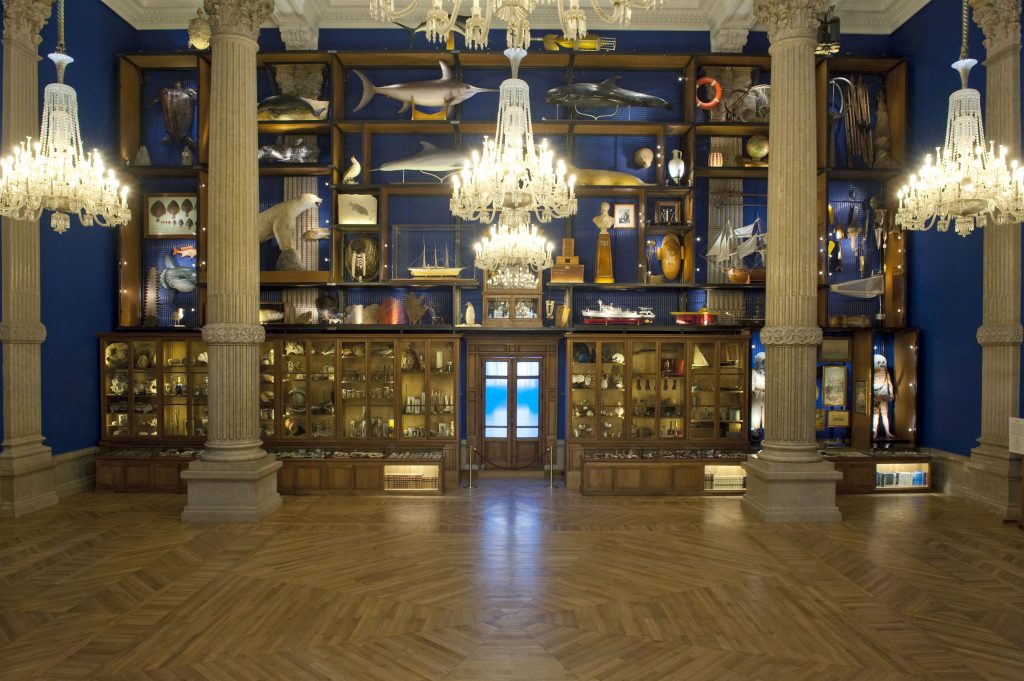

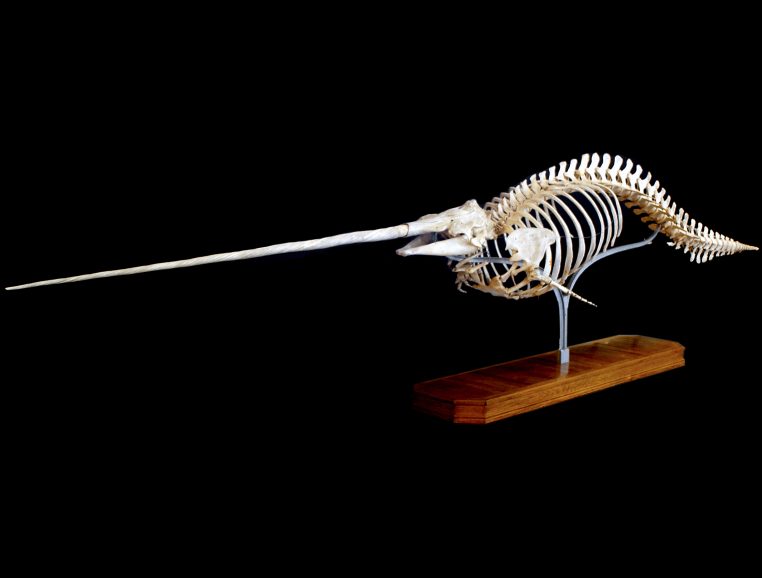
- Oceanomania
The narwhal tooth
An object of curiosity, the Narwhal’s tooth was once presented as a unicorn’s horn! The narwhal(Monodon monoceros) is protected by CITES (Convention on International Trade in Endangered Species of Wild Fauna and Flora). At birth, he is about 1.60 m long and weighs 80 kg. Males can reach a length of 5.40 m and a weight of about 1900 kg. The Narwhal has only two teeth, the right one remains embedded in the jaw, while the left one grows in a counter-clockwise spiral, this sword-shaped tooth then takes about ten years to grow. It can measure more than 3 m long and in rare cases it is present in females (1 in 500). Narwhals live in groups and can move under icebergs because they do not have a dorsal fin: this is a particularity they share with their cousins, the belugas. The two teeth presented in Oceanomania are 1.87 m long.
- Oceanomania
Hirondelle's medicine chest
Trunk covered with chagrined leather made by Louis Vuitton, inscribed “Yacht Hirondelle Médicaments”, with a folding front panel, a vertical drawer for bottles and five horizontal drawers. Custom made, it was used during the campaigns of the
Prince Albert I. It was entrusted to the Museum in March 1996 by Prince Rainier III.

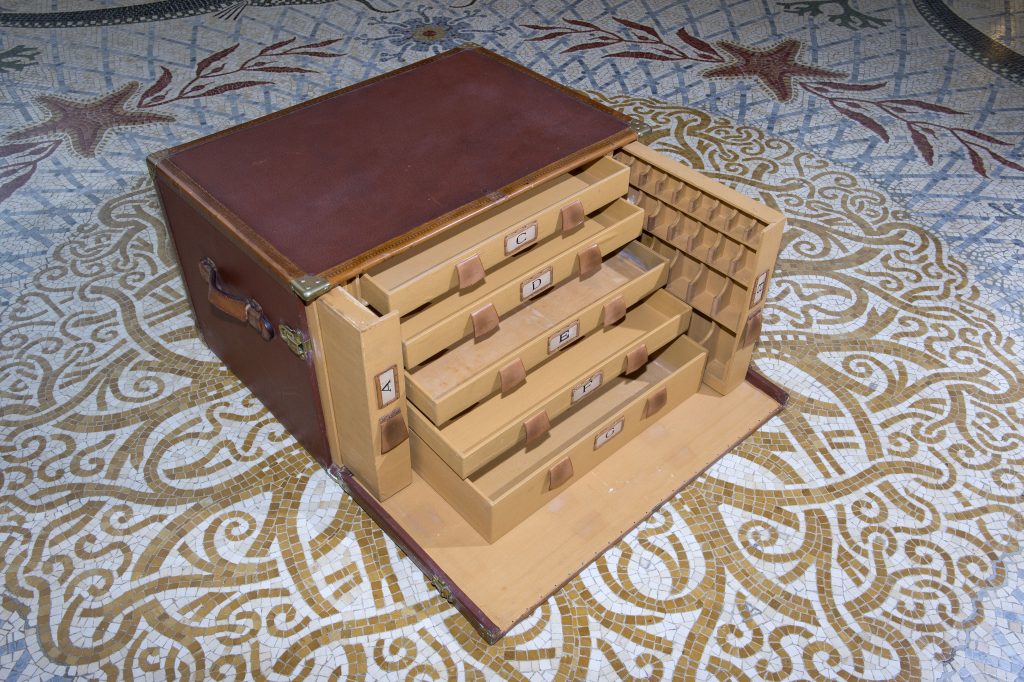
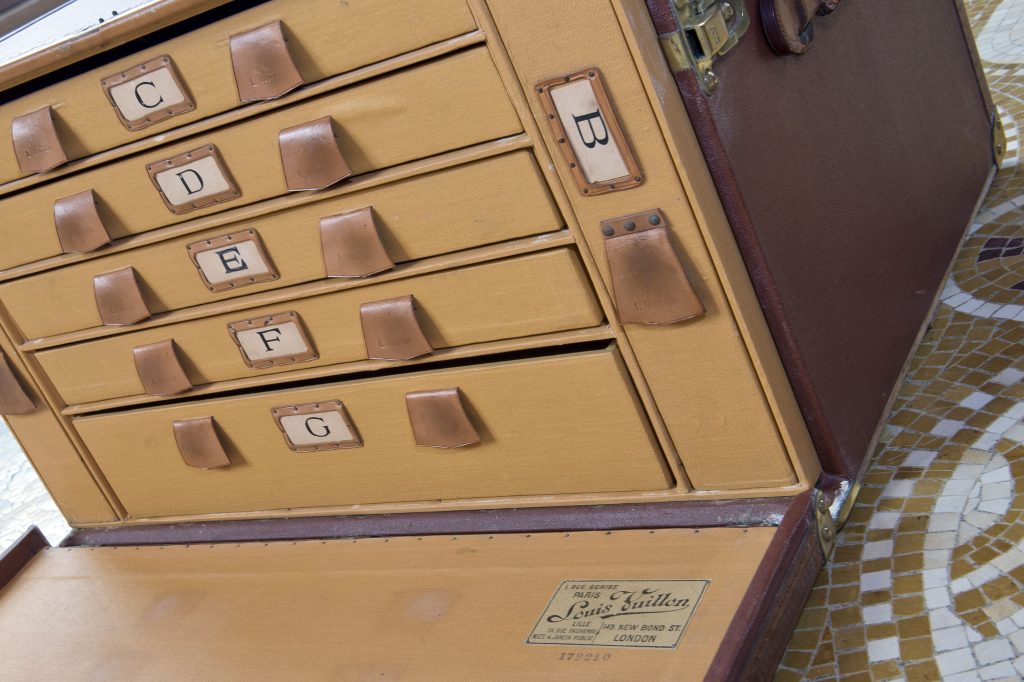
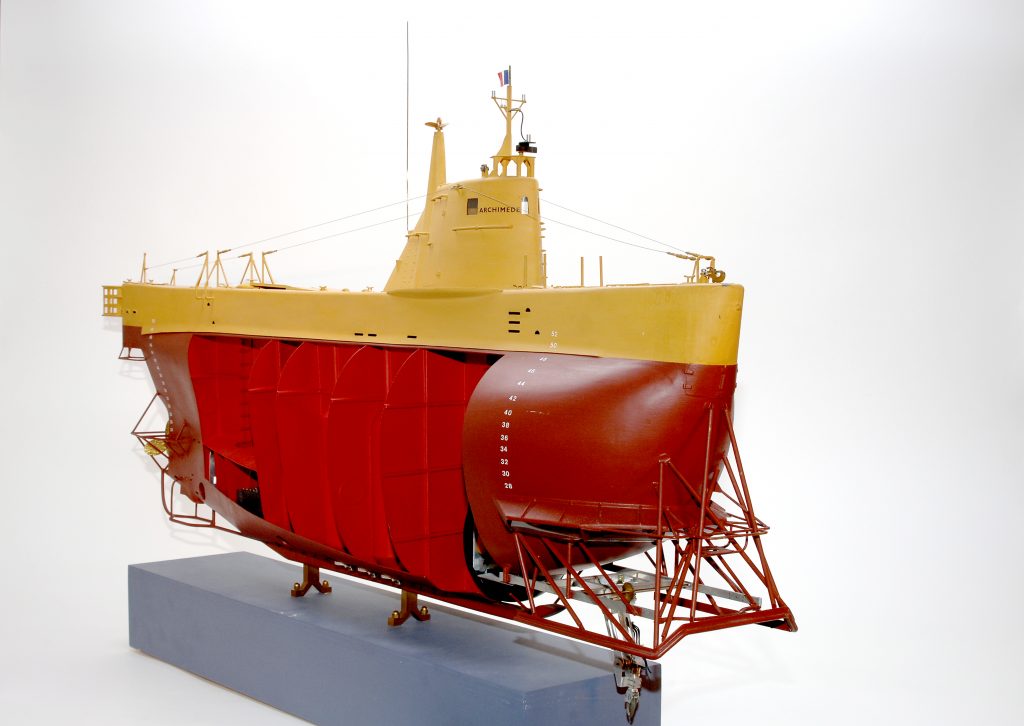
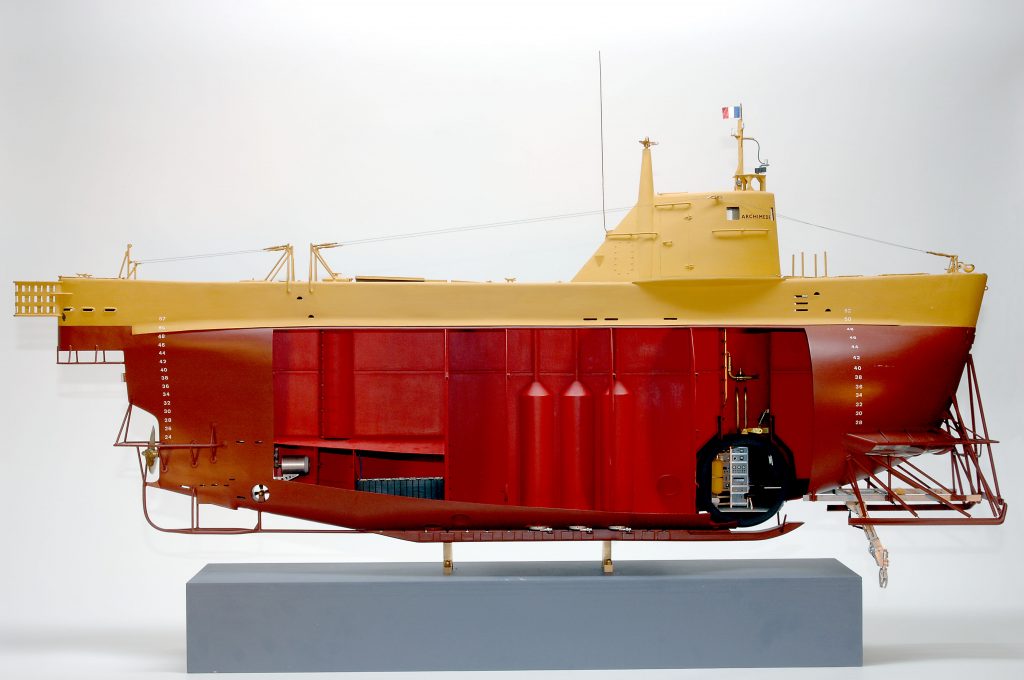
- Oceanomania
TheArchimedes
French oceanographic research bathyscaphe. The model of Oceanomania is 1/20th, the original is 22.10 m long, 5 m wide and 8 m high. Archimedes has made a total of 139 dives. In 1974, he participated in the F.A.M.O.U.S (French American Middle Ocean Undersea Survey) expedition to map the Mid-Atlantic Ridge. The first deep dive of the Archimedes: on July 15, 1962, Commander Georges Houot (1913-1977) and Marine Engineer Pierre Willm (1926-2018) reached 9
200 meters, they will stay there for 3 hours. In the following days other test dives will take place, and will allow to reach more than 9 500 meters of depth. The real bathyscaphe can be seen at the Cité de la mer in Cherbourg.
- Oceanomania
Nautile
Nautilus shell engraved by Charles H. Wood (active between 1840 and 1870) around 1851 commemorates the victories of the famous admiral Horatio Nelson (1758-1805). Among other things, the artist depicted Saint George slaying the dragon and the coat of arms of the city of London. An allegory of Victory shows a shield inscribed with Admiral Nelson’s battles. This copy is one of the replicas of the nautilus engraved for the 1851 World’s Fair in London and dedicated to the British nation and Queen Victoria. C. H. Wood specialized in engravings on naturalistic supports (ostrich eggs, calabashes, shells).
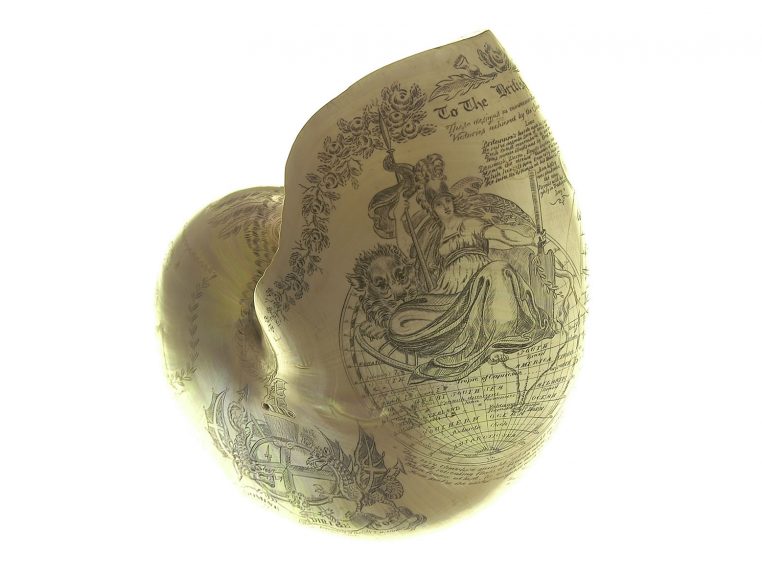
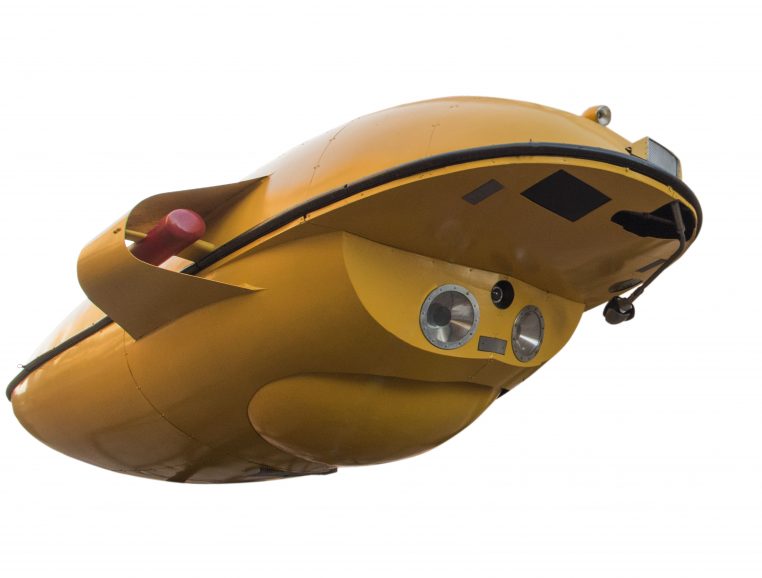
- Oceanomania
SP3000 Cyana
Model of the SP3000 Cyana Diving Saucer prepared for model making
which was presented from 1982 in the Salon d’honneur of the Museum (see
photos). It was displayed next to Captain Cousteau’s SP350. In the cabinet of
curiosity it presents its ventral part.
Technical characteristics: Wood. Length 110 cm, width 70 cm, height 40 cm, weight 40-45 kg.
- Oceanomania
Steller's Rhytin
66 cm long skull of a now extinct marine mammal, Steller’s Rhytine
(Hydrodamalis gigas). A close relative of the dugong, it was the largest of all the sirenians, measuring up to 8 metres and weighing 6 to 7 tonnes. Steller’s Rhytine was a herbivore feeding on gigantic algae, the kelps. Discovered in 1741 in the region of the Commander Islands (Arctic), during Vitus Bering’s expedition, the species disappeared 27 years later in 1768. Hunted without mercy for its fat and its excellent quality meat. Its very placid character, its very long gestation period and its slowness were fatal to the rhytine which quickly disappeared.
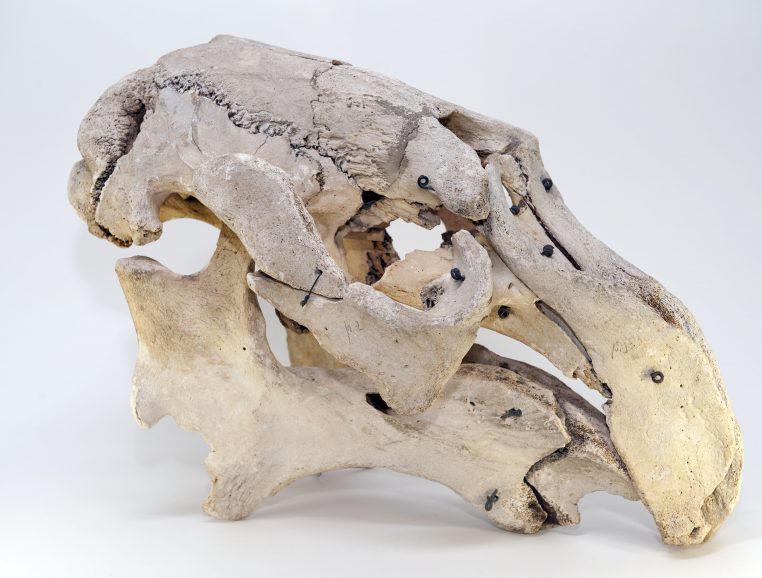
Monaco & the Ocean
Monaco and the Ocean illustrates the special attachment of three Princes to the Ocean: Albert I, Rainier III, H.S.H. Prince Albert II.
It’s a journey through time alongside Heads of State who are aware of and committed, each in their own way, to the exploration and protection of the ocean.
The objective here is not only to exhibit, but to raise awareness, convince and engage as many people as possible in the protection of the oceans. As well as offering the opportunity to learn and understand, “Monaco & the Ocean” invites you to take action. To build, together, a better future for the oceans! The threats to marine ecosystems are cumulative. Fishing, aquaculture, shipping, energy, leisure activities, coastal construction… activities are multiplying, expanding and degrading environments that are essential for the reproduction or life of certain species.
“Monaco and the Ocean” challenges the visitor to become more interested in the future of the ocean, a common asset of humanity, while confronting him with the influence that man can have on this fragile ecosystem.
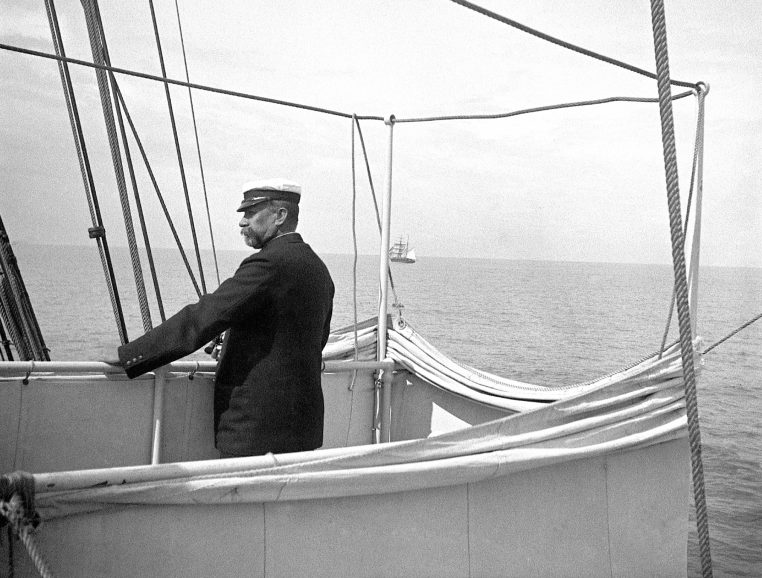
- Monaco & the Ocean
Prince Albert I
Throughout his life, Prince Albert I (1848-1922) was attracted by the sea and science. This humanist ruler sought a better understanding of nature and left a considerable body of work to posterity. He undertook 28 scientific campaigns with his four oceanographic ships, which he equipped with the latest technological innovations. The Prince’s contribution was important in three areas of oceanography: instrumentation, where he invented himself or perfected existing instruments; cartography, with in particular important progress in the mapping of Spitzbergen and his major contribution to this field remains the General Bathymetric Chart of the Oceans; the dissemination of oceanographic knowledge through publications and conferences.
“Thus I began the cultivation of Oceanography, the new science which penetrates the secret of the abyss. And this work, has filled the most beautiful years of my life by absorbing the best of myself. »
Albert I, The Career of a Navigator, 1902.
- Monaco & the Ocean
The laboratory
The visitor crosses the large laboratory of the second Hirondelle, last ship of Prince Albert Ier: the furniture, the anti-roll tables, the flask holders and the glass containers are all original! Numerous experiments were conducted there, including the study of the venom of the physalia, the compressibility of sea water and the study of sediments. the compressibility of sea water or the study of sediments.
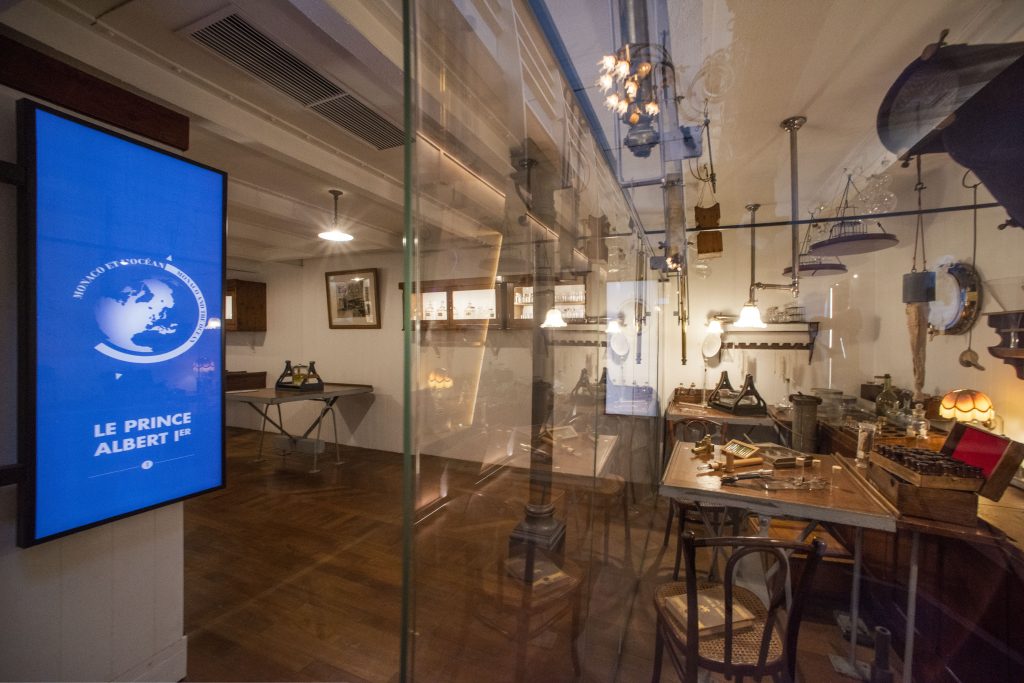
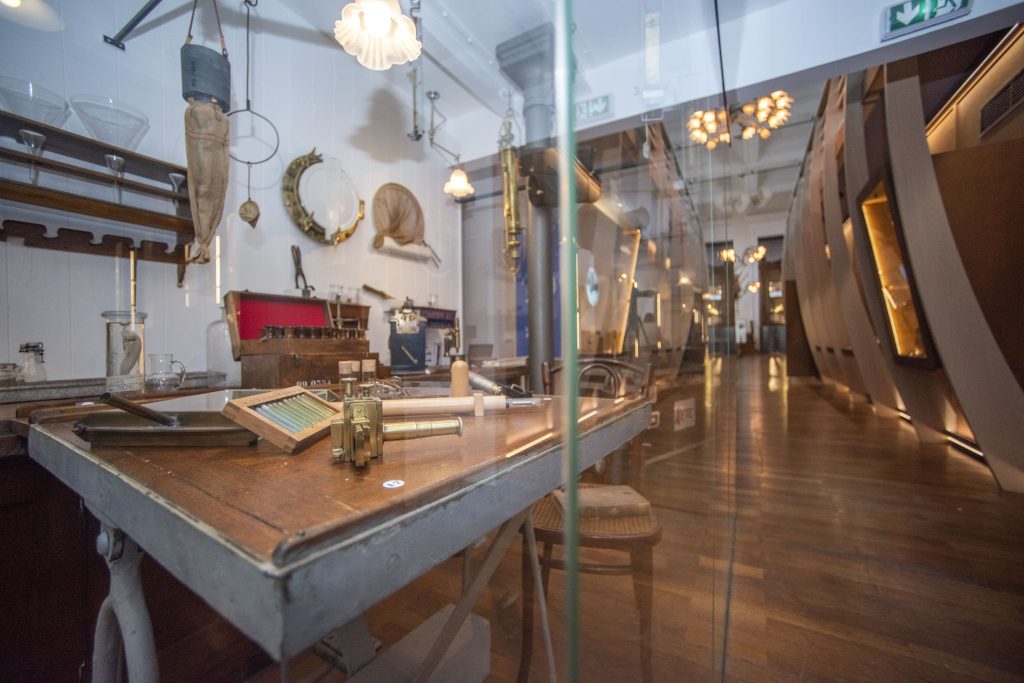
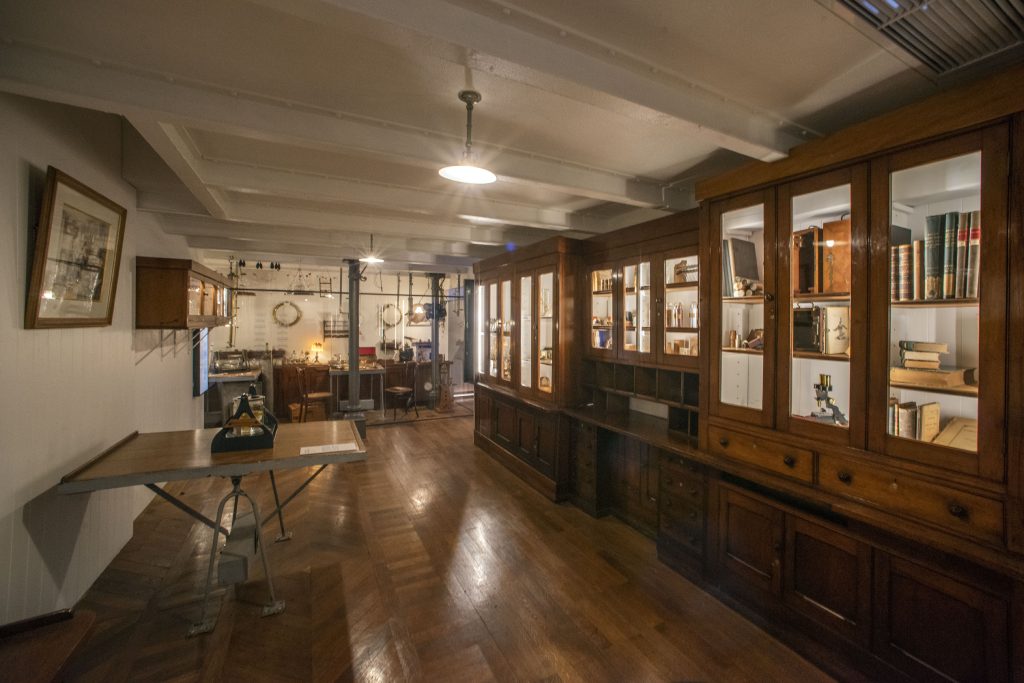
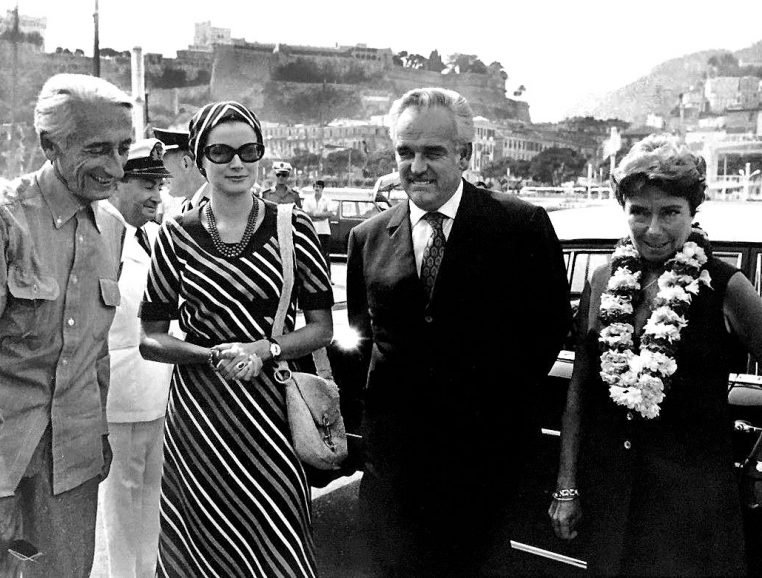
- Monaco & the Ocean
Prince Rainier III
Rainier III (1923-2005) contributes to the protection of the environment and more particularly of the oceans through numerous actions. Anxious to continue the work of Albert I in raising public awareness, he appointed Commander Cousteau to reveal to the general public the underside of the oceans’ surface. The famous explorer in the red hat held this position from 1957 to 1988, during which time he revealed the underwater world to the general public and made the whole world aware of the fragility of the marine environment.
“Let us find the moral and political strength to apply the prescribed remedies in order to save the essential. »
Rainier III, at the Rio Conference in 1992.
- Monaco & the Ocean
Jacques-Yves Cousteau
It was with Calypso that Captain Jacques-Yves Cousteau (1910-1997) sailed and explored all the seas of the globe. Through his expeditions and films, Cousteau revealed the underwater world, its beauty but also its fragility.
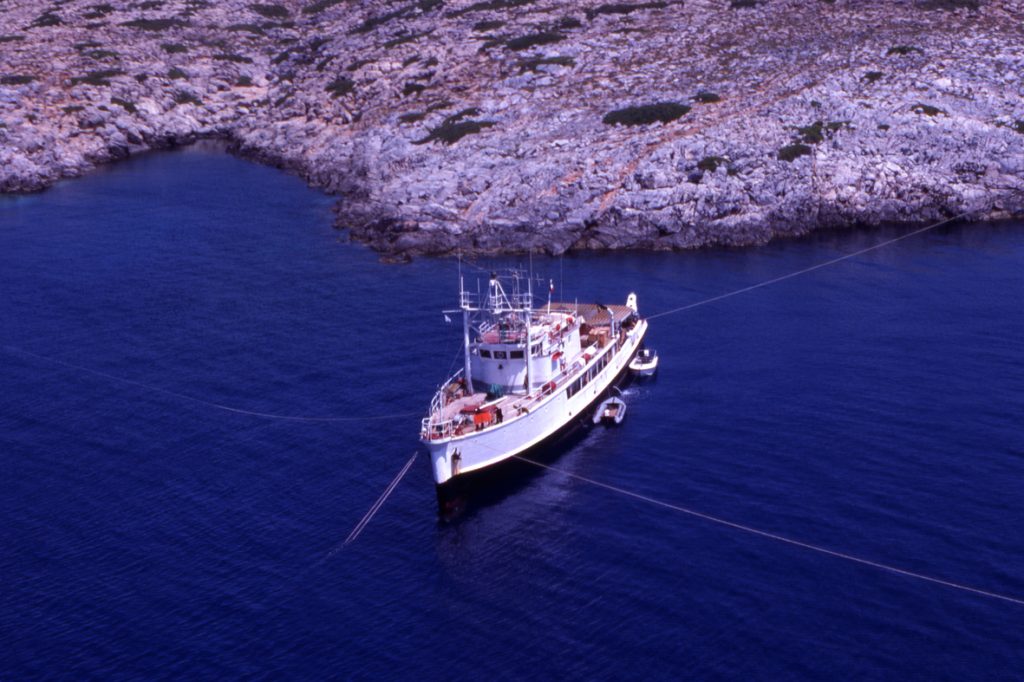
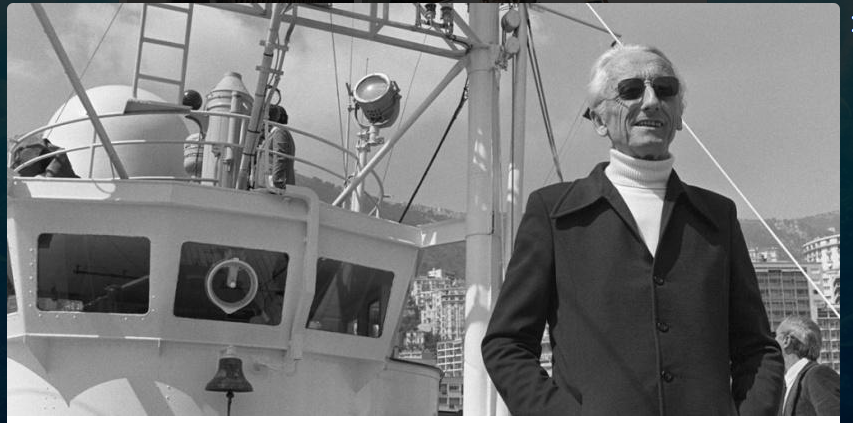
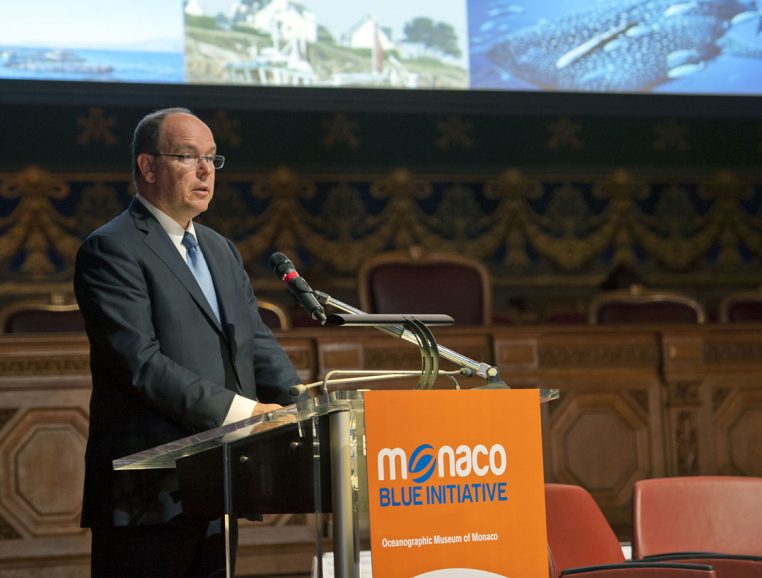
- Monaco & the Ocean
Prince Albert II
Following in the footsteps of his great-great-grandfather Albert I and his father Rainier III, H.S.H. Prince Albert II of Monaco has been pursuing an ambitious environmental protection policy since the very first day of his accession to the throne. This is an essential fight for H.S.H. Prince Albert II. In 2006, he reached the North Pole by sled to see for himself and raise awareness of global warming, carrying out an adventure that Albert I had already dreamed of a hundred years earlier. His ecological commitment naturally led to the creation of the Prince Albert II of Monaco Foundation in June 2006. “I have decided to create a foundation dedicated to environmental protection and sustainable development (…). It is a global challenge that requires urgent and concrete actions in response to three major environmental issues: climate change, biodiversity and water. Climate change, biodiversity and water,” he explained at the time. Three years later, the Reigning Prince reached the South Pole accompanied by the adventurer Mike Horn. Prince Albert II also launched the Explorations of Monaco in mid-2017 for a three-year mission, which revives the great campaigns of Albert I in the age of the contemporary world. The Prince’s commitment to the environment is particularly evident on Monegasque territory. Among many other examples, we can highlight the installation of 70 seawater heat pumps, the objective of carbon neutrality in 2050, clean public transport and administrative vehicles, the installation of 40 artificial habitats serving as fish nurseries under the pontoons of the ports, new constructions respectful of the ecosystem of the sea bed. H.S.H. Prince Albert II has received numerous international awards for his actions in favour of ecology, such as the Teddy Roosevelt Medal, honouring his efforts to preserve the environment. So many signs of recognition for this Head of State in His deep personal commitment over the years.
- Monaco & the Ocean
The globe
The globe on the central deck of the boat: this globe illustrates the current threats to the environment
